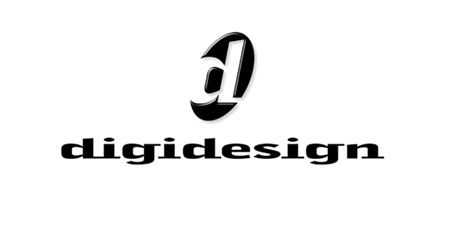Type Brand Acquisition date 1995 | Industry Technology Founded 1984 Parent organization Avid | |
 | ||
Area served Digital audio production Website Avid Audio official Web site Headquarters Daly City, California, United States Founders Evan Brooks, Peter Gotcher | ||
Avid Audio (formerly Digidesign) is a North American digital audio technology company. It was founded in 1984 by Peter Gotcher and Evan Brooks. The company began as a project to raise money for the founders' band, selling EPROM chips for drum machines. It is a subsidiary of Avid Technology, and during 2010 the Digidesign brand was phased out. Avid Audio products will continue to be produced and will now carry the Avid brand name.
Contents
Products
Digidesign's flagship software product was Pro Tools, which came in three variants: Pro Tools|HD, Pro Tools LE, and Pro Tools M-Powered.
Pro Tools|HD required a Digidesign TDM system and interface, and was intended for professional recording studios. Pro Tools LE was a complete package intended for home users and some post-production facilities. The package included the Pro Tools LE software and hardware such as the M-Box 2 or Digi 003. Pro Tools M-Powered was simply the Pro Tools application adapted to run on M-Audio hardware, and generally comparable in power to an LE system.
In 2010, these various editions of Pro Tools were mostly abandoned and it is now being sold by Avid as a singular software product, with the level of functionality dependent on the hardware chosen by the user.
Digidesign also made a number of products for the Pro Tools platform, including several software plug-ins. They also manufacture a wide variety of hardware add-ons for Pro Tools, such as audio interfaces, MIDI interfaces, Synchronizers, and control surfaces. In the spring of 2005 they introduced a system for live sound mixing called VENUE.
History
History of Avid Audio software
Digidesign Software was developed by UC Berkeley graduate Peter Gotcher and his friend Evan Brooks, both majors in electrical engineering and computer science.
Sound Designer
The first incarnation of today's Pro Tools started life in 1984 as Sound Designer, while the pair were creating and selling drum sound chips under their Digidrums label. Sound Designer was originally designed to edit sounds for sampling synthesizer like the Prophet 2000, Ensoniq Mirage, Akai s900 and the E-MU Emulator sampling keyboard. Sounds would be sampled into the synth and transferred into the Mac where the user could manipulate the samples sound: EQ, amplitude, etc., as well as truncate to save memory or set loop points and then transfer back into the synth for playback. The software was originally written for editing drum samples and then burning new chips for the Linn Drum era drum machines. (original Ref to emulatorarchive.com deleted as it now hosts Malware)
Sound Designer file formats
The SDII (Sound Designer II, sometimes seen abbreviated as SD2) is a monophonic/stereophonic audio file format, originally developed by Digidesign for their Macintosh-based recording/editing products. It is the successor to the original monophonic Sound Designer I audio file format.
Sound Tools
Gotcher and Brooks discussed with E-MU Systems the possibility of integrating their renamed 'Sound Tools' software into the Emulator III keyboard released in 1987, however E-MU rejected this option and Gotcher and Brooks went on to start DigiDrums.
Sound Tools was debuted on January 20, 1989 at NAMM (National Association of Music Merchandisers). At this stage Sound Tools was a simple computer based stereo audio editor. Although the software had the possibility to do far more it was limited by the hard drive technology, which was used to stream the audio and allow for the non-destructive editing that Sound Tools offered.
Pro Tools
The first version of Pro Tools was launched in 1991 offering four tracks and selling for US$6,000. Digidesign continued to improve Pro Tools, adding a sequencer and more tracks with the system offering recording at 16-bit and 44.1 kHz. In 1997 Pro Tools had eventually reached 24-bit and 48 track versions. At this point, the migration from more conventional studio technology to the Pro Tools platform took place within the industry.
